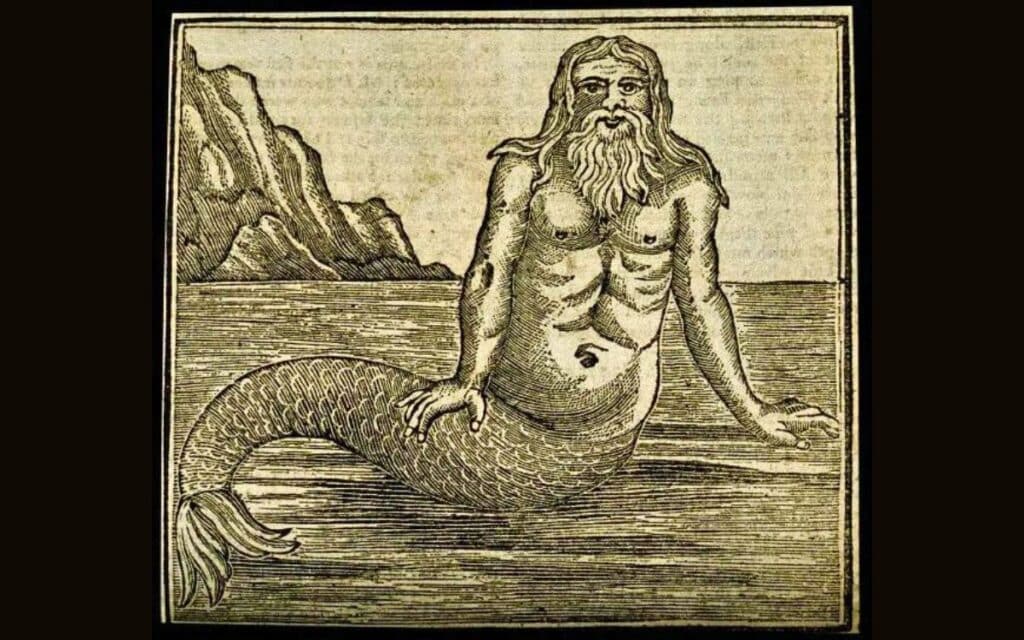The Wild Man of Orford, a mysterious figure hauled from the Suffolk waters by fishermen in the 12th century, remains a source of fascination and intrigue even today, writes RICHARD CLEMENTS

Sitting on the Suffolk coast, Orford Castle is steeped in history. Its imposing stone keep, constructed during Henry II’s reign, has stood the test of time.
Amid its medieval grandeur, a peculiar tale lingers, one of mystery, curiosity, and perhaps, something otherworldly.
This is the legend of the Wild Man of Orford, a creature said to have been caught by fishermen in the 12th century, sparking intrigue that still echoes today.
But was this “wild man” a mere myth or something more? Let’s dive into the captivating story and explore its many layers.
A Mysterious Catch from the Sea
In the late 12th century, local fishermen casting their nets in the waters off the Suffolk coast reeled in something far stranger than their usual haul of fish.
They found themselves face-to-face with a creature that, by all appearances, resembled a man. However, his hairy body and wild demeanour suggested something altogether different.
The fishermen, perplexed and terrified, brought the creature to the newly-built Orford Castle, where he was imprisoned under the watchful eye of the castle’s governor, Bartholomew de Granville.
According to records from the time, such as those by chronicler Ralph of Coggeshall, the “wild man” was mute, covered in hair, and displayed an odd diet. He preferred raw fish, from which he squeezed out the moisture before consuming.
Despite numerous attempts to communicate with him, he responded only with grunts and strange noises.
But what made this “wild man” unique was not just his appearance but the fact that he had come from the sea, a detail that stirred imaginations and fuelled local folklore.
Was The Wild Man of Orford a Merman?
The fact that the creature emerged from the sea naturally led to speculation.
Was this strange figure a merman, a being of legend who lived beneath the waves?
While the wild man did not possess the classic fish tail that typically accompanies merman depictions, many later artistic representations altered the story to include webbed hands and feet, and even a tail.
Over the centuries, the legend evolved, and some versions of the tale have incorporated these fantastical elements.
In medieval England, the sea was both revered and feared. Those who worked the waters rarely knew how to swim, and the deep was seen as a mysterious, sometimes malevolent force.
Superstition ran deep, and anything unusual emerging from the sea, like the Wild Man of Orford, was bound to inspire tales of the supernatural.
Some believed the creature to be an evil spirit, others thought he was a dead fisherman’s ghost, while some whispered that he was in league with the Devil.
Imprisonment and Escape
During his time at Orford Castle, the wild man was subjected to various treatments in an attempt to extract information.
Some reports suggest that he was even tortured, suspended by his feet in hopes that he would speak.
However, the creature remained mute, seemingly either unable or unwilling to communicate with his captors.
His behaviour further unnerved the castle’s residents. When taken to the local church, the wild man showed no signs of recognition or reverence towards religious symbols. In deeply Christian medieval society, this was seen as a sign of something unholy.
Despite these mysterious traits, the wild man was not violent. He remained passive throughout his captivity and even seemed to enjoy his time swimming when taken to the sea, albeit under strict watch.
But it was during one of these swims that he made his escape. After several instances of diving beneath nets designed to contain him, the wild man finally vanished into the depths, never to be seen again.

A Legend that Endures
The story of the Wild Man of Orford has lingered on, passed down through generations.
Today, the tale is immortalised in local iconography. Carvings of wild men can be found on baptismal fonts in Suffolk’s medieval churches, perhaps in remembrance of the mysterious figure pulled from the sea.
His image even graces the logos of local businesses, keeping the legend alive in the region’s cultural memory.
But what was the wild man? Some historians have suggested that the creature might have been a real human – perhaps a shipwrecked sailor, driven mad by his time at sea, or even a foreigner whose unfamiliarity with local customs and inability to communicate gave rise to exaggerated stories.
Others believe that the tale is an example of medieval folklore, a story shaped by the fears and beliefs of a superstitious population.
The Symbolism of the Wild Man
Interestingly, the figure of the wild man appears in folklore across cultures.
In medieval Europe, wild men were often depicted as creatures living on the fringes of society, uncivilised and untamed, representing mankind’s connection to nature and the primal world.
The Orford wild man, in this context, could symbolise a confrontation between the civilised world of medieval England and the mysterious, untamed forces of the sea.
His capture and imprisonment might be seen as an attempt by society to impose order on something wild and unknowable, much like the way medieval England sought to impose control over its turbulent political landscape during Henry II’s reign.
The wild man’s eventual escape could then symbolise the limits of human control over nature and the unknown.
Fact, Fiction or a Bit of Both?
The Wild Man of Orford remains an enigma, his story a curious mix of history, folklore, and imagination.
Was he a real person, misunderstood by his captors, or a mythical creature who briefly emerged from the depths before vanishing back into the unknown?
We may never know for sure, but the legend endures as a testament to the power of storytelling and the deep connection between people and the mysteries of the natural world.
Orford Castle still stands, a silent witness to the strange events of the 12th century, its walls holding the whispers of a time when a wild man briefly walked among the villagers of Suffolk.
Whether you see it as a cautionary tale or a piece of colourful local folklore, the Wild Man of Orford continues to fascinate, reminding us that some mysteries are destined to remain unsolved.
What do you think of the legend of the Wild Man of Orford? Share your thoughts in the comments below.








I really enjoyed reading this account of the wild man or Merman. I heard about this creature many years ago and have always thought there must be some truth within what appears a fantastic story. I never thought that he might have been a overseas seaman or simply a mute man until I read your account, so thank you for giving me something to ponder over.
Glad you enjoyed the story Robert, and it prompted you to reflect on the mystery 🙂